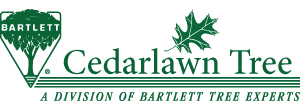Two-lined Chestnut Borer
 Two-lined chestnut borer adults are now active. The adult stage of this insect is a beetle that prefers to attack stressed or declining oaks and beech trees. The insect gets its name from the fact it was a primary pest of the American chestnut tree and has 2 thin lines on its back. The damaging stage of this insect pest is the larval stage (white, legless and “grub-like”) that will eventually reach 1” in length at maturity. The larvae cause damage to trees by burrowing in the conductive tissues of trees thereby limiting water, nutrient and photosynthate flow throughout the tree.
Two-lined chestnut borer adults are now active. The adult stage of this insect is a beetle that prefers to attack stressed or declining oaks and beech trees. The insect gets its name from the fact it was a primary pest of the American chestnut tree and has 2 thin lines on its back. The damaging stage of this insect pest is the larval stage (white, legless and “grub-like”) that will eventually reach 1” in length at maturity. The larvae cause damage to trees by burrowing in the conductive tissues of trees thereby limiting water, nutrient and photosynthate flow throughout the tree.
Adults begin emerging in June here in the Northeast. The adult is a dark-colored beetle around 1/5” -1/2”long. There are 2 thin, light-colored lines visible on the back of the insect. The adults lay eggs on trees that hatch in several weeks. After hatching, the larvae burrow into trees to begin feeding.
Detecting early damage by two-lined chestnut borer is difficult as attack begins in the upper canopy of trees. Declining of upper branches is usually one of the first signs of attack. The presence of D-shaped “exit holes” made by the adult beetles after they emerge from pupation and the presence of feeding galleries under tree bark in the upper canopy declining branches is an indicator of two-lined chestnut borer activity. Keep in mind that many other problems can also cause upper canopy branches to decline and die. These exit holes are rarely found on lower trunks. In the subsequent several years after initial attack damage can be found lower in trees. Continued attack often results in tree death.
Holes produced in oaks by the red oak borer should not be confused with two-lined chestnut borer. Red oak borer emergence holes are around ½”, round, and can be seen lower on a tree trunk. Typically there may be only 1 or so exit holes per tree and their presence does not usually signal tree demise although severe outbreaks have occurred in geographical areas. Larval activity is indicated by “wet spots” on trees where larvae have created holes from which sap flows.
Prevention is key in avoiding tree loss to two-lined chestnut borer. By the time upper branch death is occurring it is often too late to save a declining tree. Chemical treatments are available to help protect against an initial attack. Avoid stress-creating events such as defoliation from leaf-feeding insects, changing of soil grades and construction activity around high-value trees.




